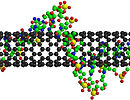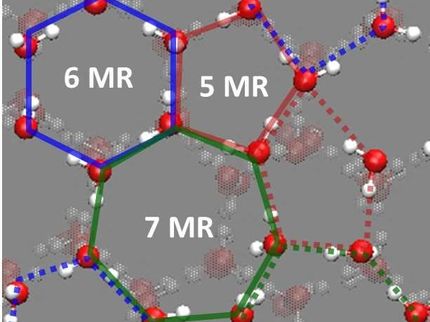For the first time, scientists catch water molecules passing the proton baton
Advertisement
water conducts electricity, but the process by which this familiar fluid passes along positive charges has puzzled scientists for decades.
But an international team of researchers has finally caught water in the act -- showing how water molecules pass along excess charges and, in the process, conduct electricity.
"This fundamental process in chemistry and biology has eluded a firm explanation," said co-author Anne McCoy, a professor of chemistry at the University of Washington. "And now we have the missing piece that gives us the bigger picture: how protons essentially 'move' through water."
The team was led by Mark Johnson, senior author and a professor at Yale University. For over a decade, Johnson, McCoy and two co-authors -- professor Kenneth Jordan at the University of Pittsburgh and Knut Asmis, a professor at Leipzig University -- have collaborated to understand how molecules in complex arrangements pass along charged particles.
For water, this is an old question. Chemists call the process by which water conducts electricity the Grotthuss mechanism. When excess protons -- the positively charged subatomic particles within atoms -- are introduced into water, they pass quickly through the fluid, riding a transient, ever-shifting network of loose bonds between water molecules. By the Grotthuss mechanism, a water molecule can pick up an excess charge and pass it along to a neighbor almost instantaneously.
The exchange is fundamental to understanding the behavior of water in biological and industrial settings. But it is also so fast and the vibrations between water molecules so great that the hand-off cannot be captured using traditional spectroscopy -- a technique that scatters light against a molecule to learn about its structure.
"With spectroscopy, you hit objects with a beam of photons, see how those photons are scattered and use that scattering information to determine information about the object's structure and arrangement of atoms," said McCoy. "And this is where Mark Johnson's lab at Yale has really been a leader -- in adapting spectroscopy to better capture this transfer of protons among water molecules."
Johnson's lab, along with collaborators in Asmis's lab in Germany, figured out how to freeze the proton relay to slow the process, giving the researchers time to visualize the Grotthuss mechanism using spectroscopy. When these "spectroscopic snapshots" proved still too blurry due to vibrations in chemical bonds, they switched to studying this mechanism in "heavy water." In heavy water, regular hydrogen atoms are replaced by a heavier isotope called deuterium. By the quirky rules of quantum mechanics that underlie the behavior of subatomic particles, bonds in heavy water shake less than traditional H2O.
But this snapshot required massive amounts of theoretical and computational decoding to reveal just how water molecules momentarily altered their structure to both receive and pass along an extra proton. McCoy's and Jordan's groups helped develop computational approaches to analyze the spectroscopy data.
"In spectroscopy, your goal is to determine the structure of molecules based on how they scatter light," said McCoy. "In our approach, we also asked how the behavior of bonds will affect spectroscopy. That really completed our circle of inquiry and allowed us to visualize this transfer of protons."
In their paper, they describe the Grotthuss mechanism attaching various tag molecules to complexes made up of four molecules of heavy water. According to McCoy, they would like to see how the proton relay changes among larger groups of water molecules and to expand these spectroscopy techniques to include other small molecules with complex structures.
Original publication
Other news from the department science
Most read news
More news from our other portals
See the theme worlds for related content
Topic World Spectroscopy
Investigation with spectroscopy gives us unique insights into the composition and structure of materials. From UV-Vis spectroscopy to infrared and Raman spectroscopy to fluorescence and atomic absorption spectroscopy, spectroscopy offers us a wide range of analytical techniques to precisely characterize substances. Immerse yourself in the fascinating world of spectroscopy!

Topic World Spectroscopy
Investigation with spectroscopy gives us unique insights into the composition and structure of materials. From UV-Vis spectroscopy to infrared and Raman spectroscopy to fluorescence and atomic absorption spectroscopy, spectroscopy offers us a wide range of analytical techniques to precisely characterize substances. Immerse yourself in the fascinating world of spectroscopy!


































































